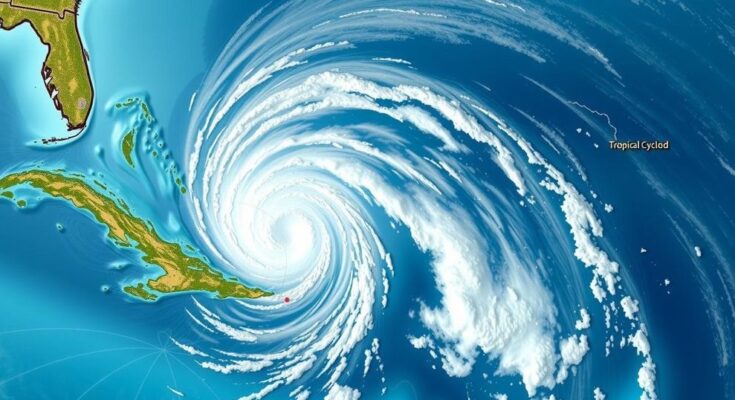Tropical Cyclone Dikeledi formed in the Indian Ocean, with winds reaching 46 miles per hour. Only 25% of tropical cyclones occur in the Southern Hemisphere, where they are classified as cyclones and spin clockwise. These storms can notably affect eastern Africa and Australia, with their season running from late October to May, peaking in activity around late February and early March.
Tropical Cyclone Dikeledi has emerged in the Indian Ocean, as reported by the Joint Typhoon Warning Center, during the late hours of Thursday according to Eastern Africa Time. The cyclone is currently exhibiting sustained wind speeds of 46 miles per hour. In the Southern Hemisphere, where only about 25% of global tropical cyclones form, these storms are classified differently than their North Atlantic counterparts, with winds exceeding 74 miles per hour designated as hurricanes in the latter region. It is noteworthy that in the Southern Hemisphere, cyclones rotate in a clockwise direction, contrasting with the counterclockwise motion of hurricanes.
Cyclones have the potential to impact various regions, particularly eastern Africa, including Madagascar, as well as the western, northern, and eastern shores of Australia and neighboring island nations. The cyclonic season in this hemisphere begins in late October and extends through May. Activity peaks vary by region but generally occur in late February and early March, indicating a distinct seasonal pattern in storm formation and intensity.
The phenomenon of tropical cyclones is a significant climatological event occurring in various oceans around the world. In total, only a fraction of these cyclonic events take place in the Southern Hemisphere. A key distinction lies within the classification of these storms depending on their location and wind speed; thus, understanding these patterns is essential. Cyclones are particularly prominent along the eastern coast of Africa and regions close to Australia, highlighting the broad impact these natural disasters can have. The seasonal cycle of activity also differs markedly from other parts of the world, accentuating the need for ongoing monitoring and preparedness in affected regions.
In summary, Tropical Cyclone Dikeledi represents a typical instance of meteorological activity within the Southern Hemisphere, where cyclones develop with unique characteristics based on their geographical location. As this cyclone continues to unfold, it serves as a reminder of the importance of awareness regarding seasonal patterns and their potential impact on regions like eastern Africa and Australia. The distinction between cyclones and hurricanes further emphasizes the necessity to understand local weather phenomena for effective disaster preparedness and response.
Original Source: www.nytimes.com




